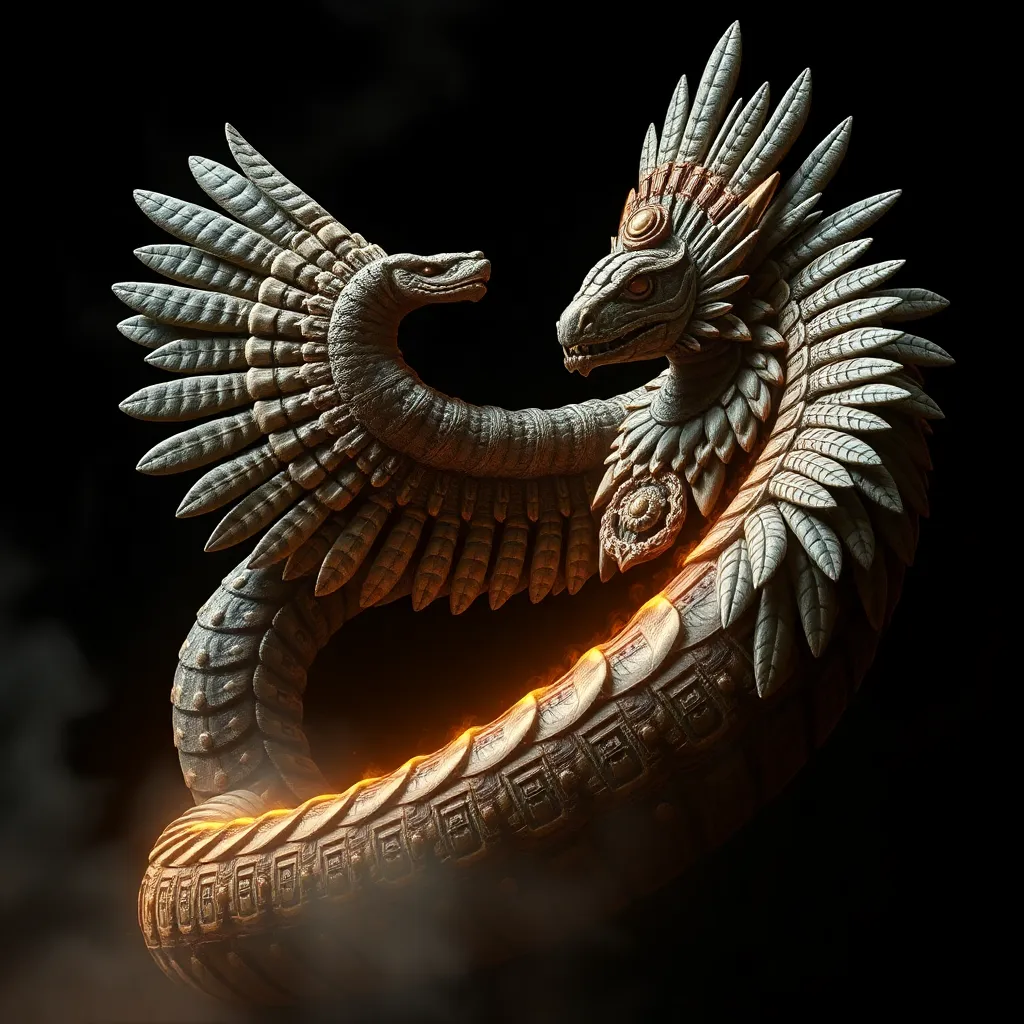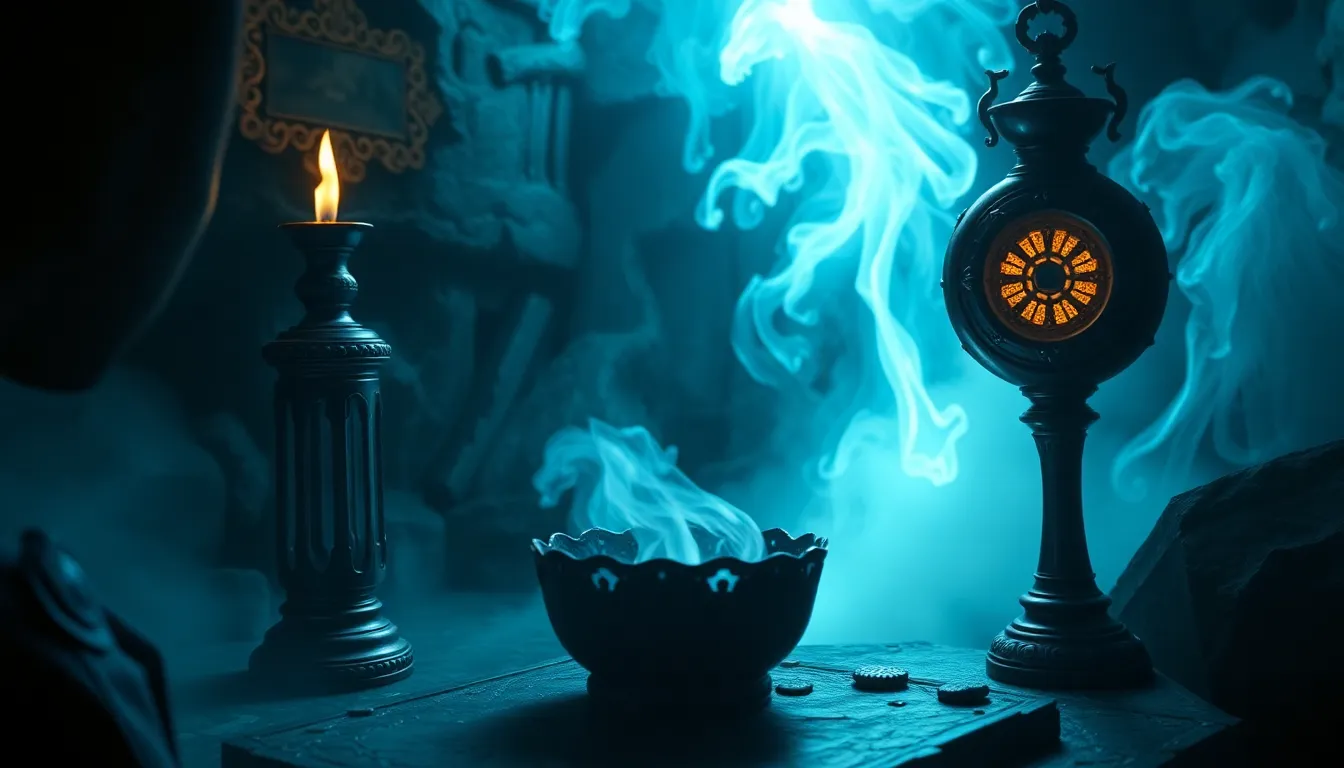The Feathered Serpent and the Mayan God Kukulkan: Converging Mythologies
I. Introduction
The Feathered Serpent is a prominent figure in Mesoamerican cultures, symbolizing a blend of the avian and the terrestrial, embodying duality and the interconnectedness of nature and spirituality. Within this rich tapestry of myth, Kukulkan emerges as a significant deity in Mayan mythology, revered for his wisdom, power, and association with the rain and agriculture.
This article aims to explore the convergence of these mythologies, highlighting the historical context, comparative analysis, and contemporary relevance of Kukulkan and the Feathered Serpent across different Mesoamerican cultures.
II. Historical Context of the Feathered Serpent
A. Origins and significance in Mesoamerican cultures
The Feathered Serpent is one of the most enduring symbols in Mesoamerican mythology, with roots tracing back to the Olmec civilization around 1200 BCE. This deity often represents creation, fertility, and the duality of existence. Various cultures, including the Olmecs, Maya, and Aztecs, encapsulated the Feathered Serpent within their cosmologies, each attributing unique characteristics and narratives.
B. Depictions and representations across different civilizations
- Aztec Quetzalcoatl: Often depicted as a plumed serpent, Quetzalcoatl is celebrated as a god of wind, air, and learning.
- Olmec and Totonac Influences: Earlier representations of the Feathered Serpent were found in Olmec artifacts, influencing later cultures.
- Mayan Kukulkan: In the Maya region, Kukulkan was revered, particularly in the Yucatán Peninsula, where he was associated with the Kukulkan Pyramid at Chichen Itza.
C. Role in creation myths and cultural practices
The Feathered Serpent plays a vital role in various creation myths, often being credited with the creation of humanity and the cultivation of maize, a staple crop. Rituals and ceremonies honoring the Feathered Serpent were common, emphasizing its importance in agricultural practices and societal well-being.
III. Kukulkan: The Mayan Feathered Serpent
A. Attributes and characteristics of Kukulkan
Kukulkan, often referred to as the Feathered Serpent god, is characterized by his serpentine body adorned with feathers, symbolizing his dominion over both the sky and the earth. He is associated with rain, storms, and the cycle of life, embodying the essence of duality that is central to Mesoamerican belief systems.
B. Mythological narratives surrounding Kukulkan
Mythological narratives often depict Kukulkan as a wise and benevolent deity who taught the Mayans essential skills, such as agriculture, astronomy, and medicine. His return during significant celestial events, such as the equinoxes, was celebrated with grand rituals, reinforcing his connection to the cyclical nature of life.
C. Kukulkan’s influence on Mayan society and religion
Kukulkan’s influence permeated various aspects of Mayan society, from architecture to religious practices. The construction of the Kukulkan Pyramid at Chichen Itza exemplifies his significance, serving as a ceremonial center and a testament to the Mayans’ architectural prowess.
IV. Comparative Analysis of Mythologies
A. Similarities between Kukulkan and other feathered serpent deities
Common themes emerge when comparing Kukulkan to other feathered serpent deities, such as:
- Creation: Both Kukulkan and Quetzalcoatl are linked to creation narratives, emphasizing their roles in shaping humanity.
- Duality: The representation of the feathered serpent as a being of both earth and sky encapsulates the duality present in many Mesoamerican myths.
B. Divergences in stories and cultural significance
While similarities abound, distinct divergences exist in the narratives and cultural significance attributed to these deities:
- Regional Variations: The Mayan interpretation of Kukulkan is unique, with specific rituals and practices differing from those of the Aztecs regarding Quetzalcoatl.
- Symbolism: Kukulkan’s association with agriculture reflects the Mayan reliance on maize, whereas Quetzalcoatl’s attributes include wisdom and learning.
C. Thematic elements: creation, duality, and the natural world
The thematic elements surrounding Kukulkan and other feathered serpent deities illuminate the Mesoamerican worldview, focusing on creation, duality, and the natural world’s cyclical nature. These themes resonate deeply within the cultural practices and spiritual beliefs of the peoples who revered these deities.
V. Archaeological Evidence and Iconography
A. Key archaeological sites related to Kukulkan
Chichen Itza, with its iconic Kukulkan Pyramid, stands as a testament to the architectural and cultural achievements of the Maya. This UNESCO World Heritage site showcases the intricate relationship between Kukulkan and Mayan cosmology, with its design reflecting astronomical alignments.
B. Artifacts and inscriptions that depict the Feathered Serpent
Numerous artifacts, including pottery, sculptures, and codices, depict Kukulkan and other feathered serpent representations. These artifacts provide insight into the religious practices and societal values of the Mayans.
C. Interpretations of iconography and what it reveals about the cultures
The iconography surrounding Kukulkan and the Feathered Serpent reveals a complex interplay of mythology, astronomy, and agriculture. Each depiction serves as a visual narrative, conveying the cultural significance of these deities and their roles in the daily lives of the Mesoamerican peoples.
VI. Impact of European Colonization on These Mythologies
A. Changes to the perception and worship of Kukulkan and similar deities
With the arrival of European colonizers, the perception and worship of Kukulkan and similar deities experienced profound changes. Colonial powers often sought to suppress indigenous beliefs, leading to the decline of traditional practices.
B. Syncretism: blending of indigenous beliefs with European religions
As a result of colonization, syncretism emerged, blending indigenous beliefs with European religions. This fusion created new forms of worship and cultural expression, allowing elements of Kukulkan’s mythology to persist in altered forms.
C. Preservation and transformation of mythologies in modern contexts
Despite the challenges posed by colonization, many indigenous communities continue to preserve and transform their mythologies. Kukulkan and the Feathered Serpent remain vital symbols of cultural identity and resilience in contemporary society.
VII. Contemporary Relevance and Revival
A. Modern interpretations of Kukulkan and the Feathered Serpent
Today, Kukulkan and the Feathered Serpent are interpreted in various ways, often reflecting a blend of traditional beliefs and modern perspectives. These interpretations emphasize the enduring significance of these mythologies in contemporary culture.
B. Cultural revival movements and the significance of these mythologies today
Cultural revival movements among indigenous communities strive to reclaim and celebrate their heritage, often focusing on the teachings and narratives surrounding Kukulkan. These initiatives foster a renewed appreciation for the rich tapestry of Mesoamerican mythology.
C. The Feathered Serpent in popular culture and its ongoing influence
The Feathered Serpent continues to captivate popular culture, appearing in literature, art, and media. This enduring fascination highlights the relevance of these mythologies in understanding human experience and cultural identity.
VIII. Conclusion
In conclusion, the convergence of the Feathered Serpent and the Mayan god Kukulkan reveals a rich tapestry of Mesoamerican mythology, showcasing shared themes of creation, duality, and the natural world. Understanding these cultural intersections enhances our appreciation for the complex histories and identities of Mesoamerican peoples.
The preservation and revival of these mythologies are vital not only for cultural heritage but also for fostering understanding and respect among diverse communities today. The Feathered Serpent stands as a powerful symbol of resilience, continuity, and the ongoing journey of cultural identity.



